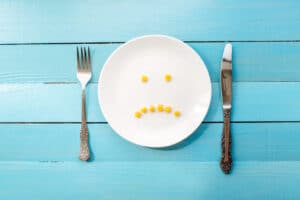In the last 12 months, have you ever not had enough money to buy the food you or your family needed? In 2021, one in three Brazilians answered “yes” to this question, which is part of a global survey, the Gallup World Poll.
During the pandemic, the proportion of people who suffer from food insecurity increased in Brazil, going from 30% of the population in 2019 to 36% in 2021, the highest level in the historical series of this research, which began in 2006, reveals the study “Food Insecurity in Brazil – Pandemic, Trends and International Comparisons”, carried out by researcher Marcelo Neri, from FGV Social, who analyzed data from the Gallup World Poll.
As a result, food insecurity in Brazil exceeded, for the first time, the simple average of the 122 countries analyzed by the Gallup survey — which is 35%. The country ranked 63The ranking position. “During the pandemic period, the Brazilian worsening was four times greater than the average of the countries surveyed”, reports Neri’s study.
According to the researcher, the situation is currently worse among the most vulnerable people. Among the poorest 20% in the country, food security increased by 22 percentage points during the pandemic.
If in 2019 it reached 53% for the poorest Brazilians, in 2021 this share reached 75% — a level close to that of countries with the highest levels of food insecurity in the world, such as Zimbabwe (80%). In this segment of the population, food insecurity in Brazil is 27 percentage points higher than the average for the countries surveyed.
Among the richest 20%, the scenario is the opposite, the study points out. Food insecurity fell by three percentage points in the same period: it went from 10% to 7%, which brings this group closer to the population of Sweden (5%), the country with the lowest levels of food insecurity.
Feminization of hunger
In her study, Neri also draws attention to the phenomenon of “feminization of hunger”. Between 2019 and 2021, women's food insecurity increased by 14 percentage points (from 33% to 47% for Brazilian women), notably in the 30 to 40 age group, while that of men fell by 1 percentage point (from 27% to 26%).
The research points to a parallel between food insecurity and poverty indicators: in 2019, 11% of the population (or 23 million Brazilians) lived below the poverty line, which is having an income of R$ 290 per person per month. As of October 2021, 13% of the population (or 27.6 million people) lived below the poverty line.
The 10 most food insecure countries in the world
Zimbabwe – 80%
Zambia – 79%
Sierra Leone – 77%
Gabon – 76%
Benin – 74%
Cameroon – 74%
Malawi – 73%
Venezuela – 72%
Nigeria – 71%
Afghanistan – 70%
Evolution of food insecurity in Brazil
2006 – 20%
2010 – 19%
2014 – 17%
2019 – 30%
2021 – 36%


